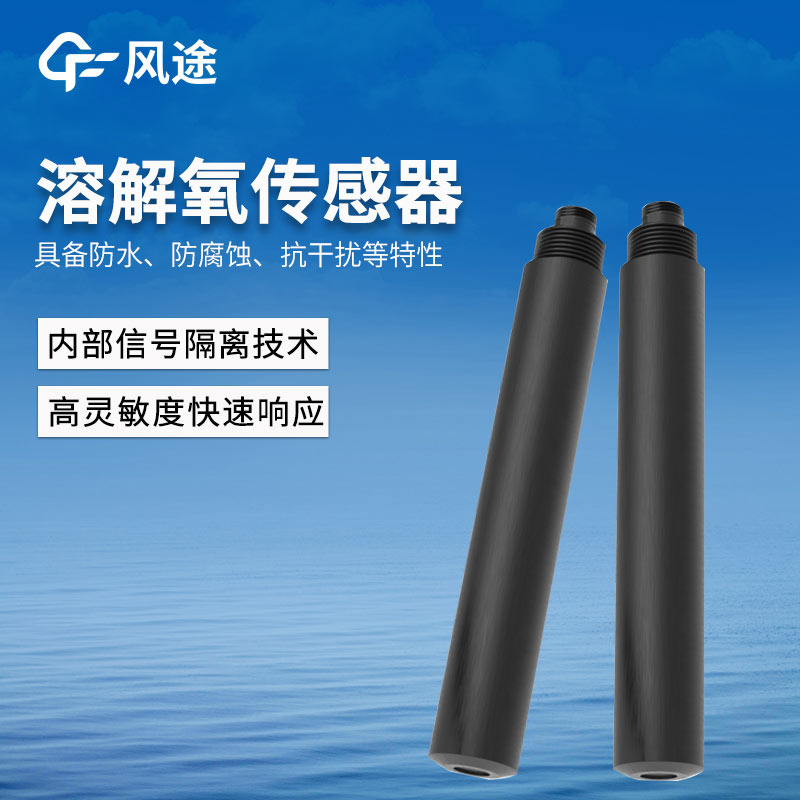Shandong Fengtu IOT Technology Co., Ltd
Sales Manager:Ms. Emily Wang
Cel,Whatsapp,Wechat:+86 15898932201
Email:info@fengtutec.com
Add:No. 155 Optoelectronic Industry Accelerator, Gaoxin District, Weifang, Shandong, China

Sales Manager:Ms. Emily Wang
Cel,Whatsapp,Wechat:+86 15898932201
Email:info@fengtutec.com
Add:No. 155 Optoelectronic Industry Accelerator, Gaoxin District, Weifang, Shandong, China
time:2025-03-27 09:17:36 source:Weather Station viewed:576 time
Dissolved oxygen refers to molecular oxygen dissolved in water, usually denoted as DO, with the unit of mg/L. It is essential for the survival of aquatic organisms. If the concentration drops below 4 mg/L, fish may suffocate to death. When it is lower than 2 mg/L, the water body enters an anaerobic state, facilitating the growth of harmful microorganisms.
The DO level reflects the degree of water pollution by organic substances. The decomposition of organic pollutants consumes oxygen. The lower the DO value, the more severe the pollution. The DO in clean water is close to saturation (about 9 mg/L), while in polluted water, it can approach zero. Therefore, measuring the DO value can indirectly reveal the pollution status of the water body.
So, how do we measure the DO value?
In laboratories, the iodometric method is commonly used.
Manganese sulfate and alkaline potassium iodide are added to the water sample. The dissolved oxygen in the water oxidizes manganese in a lower valence state to a higher valence state, forming a brown precipitate of manganese(IV) hydroxide. After adding acid, the hydroxide precipitate dissolves and reacts with iodide ions, releasing free iodine. Using starch as an indicator, the released iodine is titrated with a standard sodium thiosulfate solution. The dissolved oxygen content is calculated based on the consumption of the titration solution.
This method is applicable to water samples with dissolved oxygen contents ranging from more than 0.2mg/L to less than 20mg/L. The iodometric method is a classic approach for determining dissolved oxygen in water, featuring high accuracy. However, it is rather cumbersome to operate and is easily interfered with by other oxidizing or reducing substances.
Another method is the electrochemical probe method.
The commonly used Clark electrode consists of a gold cathode, a silver - silver chloride anode, and a polytetrafluoroethylene membrane. A certain voltage is applied across the two electrodes of the probe. Dissolved oxygen in the water permeates through the membrane and is reduced at the cathode, generating a diffusion current proportional to the concentration of dissolved oxygen. The dissolved oxygen content is calculated by measuring the magnitude of the current.
This method is suitable for determining dissolved oxygen in various water bodies, including natural water, sewage, and brine. It enables rapid on - site measurement, with simple operation and fewer interference factors. However, the electrode requires regular calibration and maintenance, and the membrane is prone to aging and damage.
The Dissolved oxygen sensor operates based on the principle of fluorescence quenching. The fluorescent substance on the sensor emits red light when excited by blue light. When dissolved oxygen in the water comes into contact with the fluorescent substance, a fluorescence quenching phenomenon occurs, weakening the intensity of the red light. By measuring the change in the intensity of the red light and calibrating it with standard solutions of known dissolved oxygen concentrations, the dissolved oxygen content in the water sample can be obtained.
This method has the advantages of a fast response speed, enabling rapid and accurate measurement of changes in dissolved oxygen. It doesn't require frequent calibration; generally, calibration once a year or even less frequently suffices. It is immune to interference from chemical substances in the water, such as sulfides and heavy metals, and features high measurement accuracy. Additionally, it has a low maintenance cost as there's no need to replace consumables like electrolytes and membranes.
It is widely applied in fields such as sewage treatment, aquaculture, environmental monitoring, and industrial process control, especially in situations where high measurement accuracy and stability are required.

The key to measuring liquid level by radar level meter is to choose the right antenna. There are 3 types of commonly used non-contact radar level meter antennas: flared, parabolic and planar antennas. Horn antenna transmits spherical wave through point source, which is suitable for liquid level meas...
In the past, measuring soil moisture relied mainly on manual collection and laboratory analysis. Farmers or agricultural researchers would usually use simple tools, such as shovels or augers, to dig or drill soil samples, and then measure soil moisture by observing and weighing them, for example. In...
In sewage treatment plants, it is necessary to measure the pH value of the water body. This is because the pH value directly affects the activity of microorganisms in the sewage treatment system. Sewage treatment mainly relies on microorganisms to decompose pollutants. However, an environment with s...
Automatic ambient air quality monitoring station is an important branch in the field of environmental monitoring in China, which realizes environmental quality management by monitoring and analyzing atmospheric environmental quality. With the continuous development of China's economy and the inc...